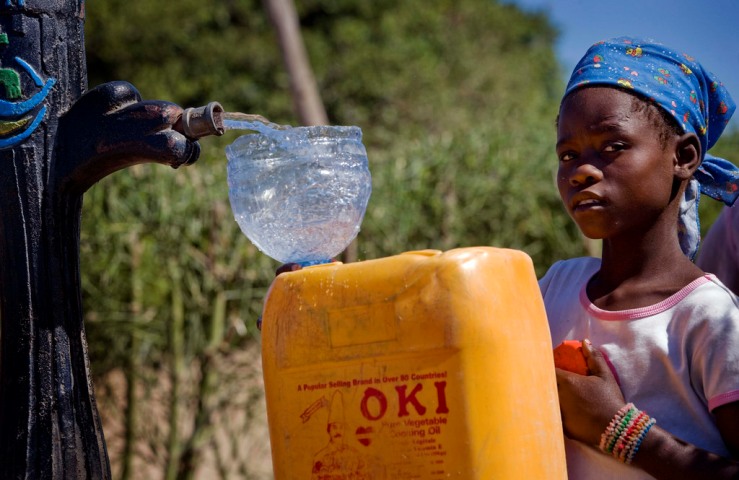Water Supply & Sanitation project improves water access in Kuwadzana, Zimbabwe
“We would go to the borehole with ten 20-litre containers at around 3 am. It was scary but there was no alternative. We are a family of seven and we needed that water for our domestic use,” said Musati.

- Country:
- Zimbabwe
The Urgent Water Supply and Sanitation Rehabilitation Project Phase II in Zimbabwe, implemented by the African Development Bank, has improved water access for targeted communities with inadequate water supply.
Waking up at the crack of dawn to beat water queues at a borehole almost 2km away had become a lifestyle for Musati and her family. The family settled in Kuwadzana 4 High-Density Suburb 13 years ago and since then, running water has been extremely difficult to access.
“We would go to the borehole with ten 20-litre containers at around 3 am. It was scary but there was no alternative. We are a family of seven and we needed that water for our domestic use,” said Musati.
Musati and her family could not get consistent water supply because of old, broken and corroded water distribution pipes. The few times that water was available, the pressure was low. Harare’s water transmission and distribution network is old, with some pipes now over 60 years and no longer able to support the required volume and pressure. The city needs funds to replace and upgrade the pipes, which will reduce water losses, currently running at approximately 60%.
To help the city of Harare to improve its water distribution system, ZimFund Urgent Water Supply and Sanitation Rehabilitation Project Phase II (UWSSRP II) replaced 37 km of critical pipelines in the water distribution system to reduce physical losses. This was also meant to ensure a secure and reliable supply for the high-density communities of Harare. The pipeline replacement took place in various critical sections of the city such as Central Business District, Granite Side, Avenues, Parirenyatwa Group of Hospitals area, Mbare, Willowvale, Sunningdale, Workington, Strathaven, Eastlea, Kuwadzana, Avondale, Southerton, Braeside, Belgravia, Milton Park and Monavale.
The project also rehabilitated 11 water pump stations in the capital city to ensure reliable and equitable distribution of treated water from Morton Jaffray Water Treatment Plant. The water pump stations are; Kuwadzana, Avondale, Emerald Hill, New Alexandra Park, Orange Grove, Crowhill, Philadelphia, Greendale Tower, Pockets Hill, Bluffhill and Donnybrook Tower, which supplies water to Mabvuku High-Density Suburb where residents have not received reliable water supply for decades. Rehabilitation of water supply pumping stations is still ongoing and is expected to be completed in the first quarter of 2019. This intervention will improve the livelihoods of nearly half a million people.
The pipe replacement exercise was completed last year, bringing relief to residents such as Musati. In the Kuwadzana area, a length of 694m of 150mm diameter pipe was installed from Kuwadzana Pump Station to Kuwadzana 2 Shopping Centre, replacing a 30 plus year-old, corroded and broken pipeline.
“Since August last year, we have been getting water daily at a good enough pressure. I am a vendor and often sell fruit. Now I can tell my customers to wash their fruit under running water to avoid cholera because running water is available. Also, it means that maintaining hygiene is really up to us now,” said 36-year-old Musati.
Officials at Harare Water Kuwadzana District have revealed that since the completion of the pipe replacement exercise last year, they have not had any new cases of pipe bursts. Before the intervention, hardly two days would pass without residents from sections 1 to 4 coming to their offices to complain about the lack of water.
ZimFund is a $145 million water and sanitation and energy programme, which was established in 2010 after the 2008 cholera outbreak. The donors to this fund include Australia, Denmark, Germany, Norway, Sweden, Switzerland and the United Kingdom. ZimFund is managed by the African Development Bank as part of its development agenda to improve quality of life in Zimbabwe.










